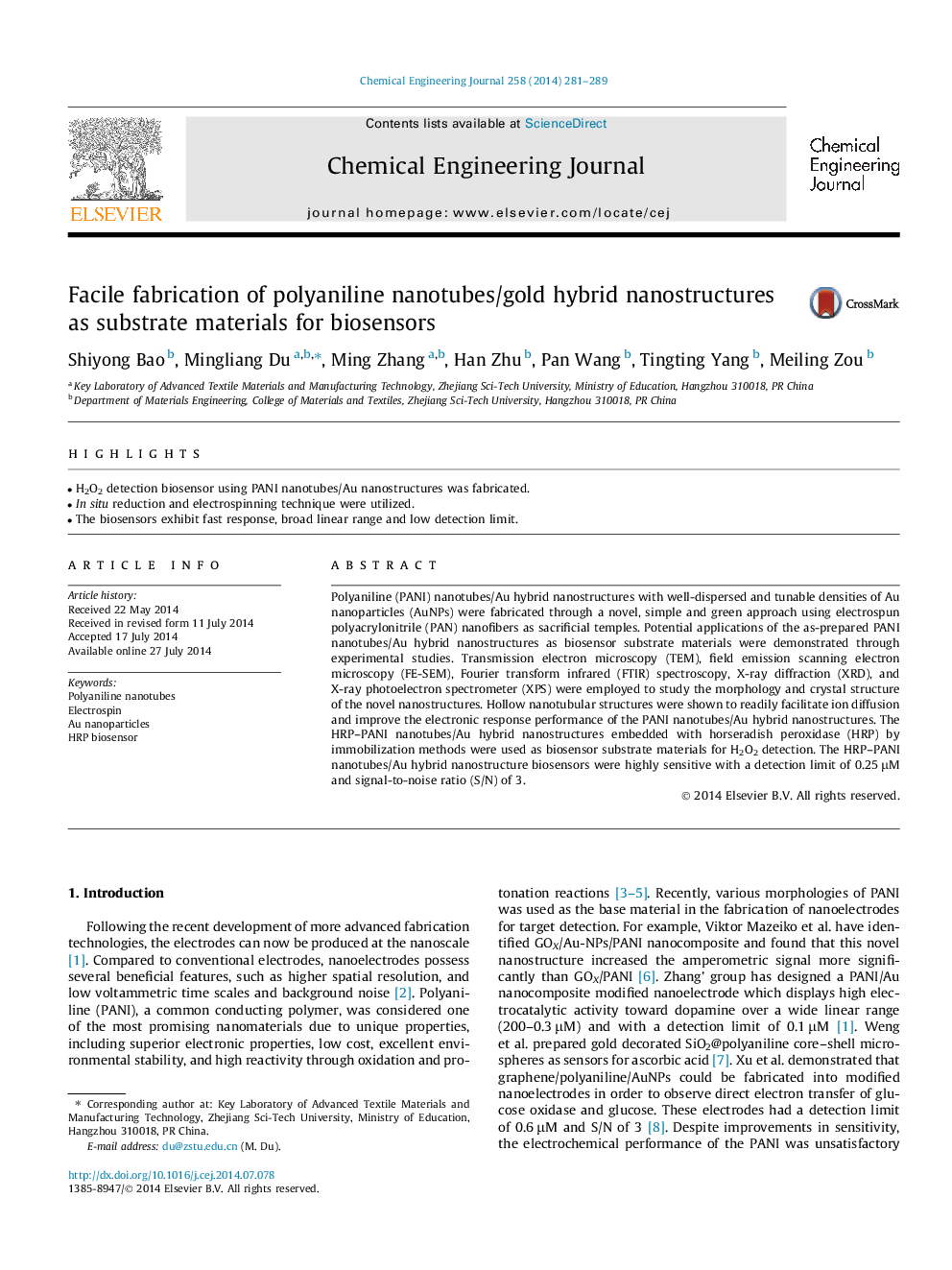| Article ID | Journal | Published Year | Pages | File Type |
|---|---|---|---|---|
| 146981 | Chemical Engineering Journal | 2014 | 9 Pages |
•H2O2 detection biosensor using PANI nanotubes/Au nanostructures was fabricated.•In situ reduction and electrospinning technique were utilized.•The biosensors exhibit fast response, broad linear range and low detection limit.
Polyaniline (PANI) nanotubes/Au hybrid nanostructures with well-dispersed and tunable densities of Au nanoparticles (AuNPs) were fabricated through a novel, simple and green approach using electrospun polyacrylonitrile (PAN) nanofibers as sacrificial temples. Potential applications of the as-prepared PANI nanotubes/Au hybrid nanostructures as biosensor substrate materials were demonstrated through experimental studies. Transmission electron microscopy (TEM), field emission scanning electron microscopy (FE-SEM), Fourier transform infrared (FTIR) spectroscopy, X-ray diffraction (XRD), and X-ray photoelectron spectrometer (XPS) were employed to study the morphology and crystal structure of the novel nanostructures. Hollow nanotubular structures were shown to readily facilitate ion diffusion and improve the electronic response performance of the PANI nanotubes/Au hybrid nanostructures. The HRP–PANI nanotubes/Au hybrid nanostructures embedded with horseradish peroxidase (HRP) by immobilization methods were used as biosensor substrate materials for H2O2 detection. The HRP–PANI nanotubes/Au hybrid nanostructure biosensors were highly sensitive with a detection limit of 0.25 μM and signal-to-noise ratio (S/N) of 3.
